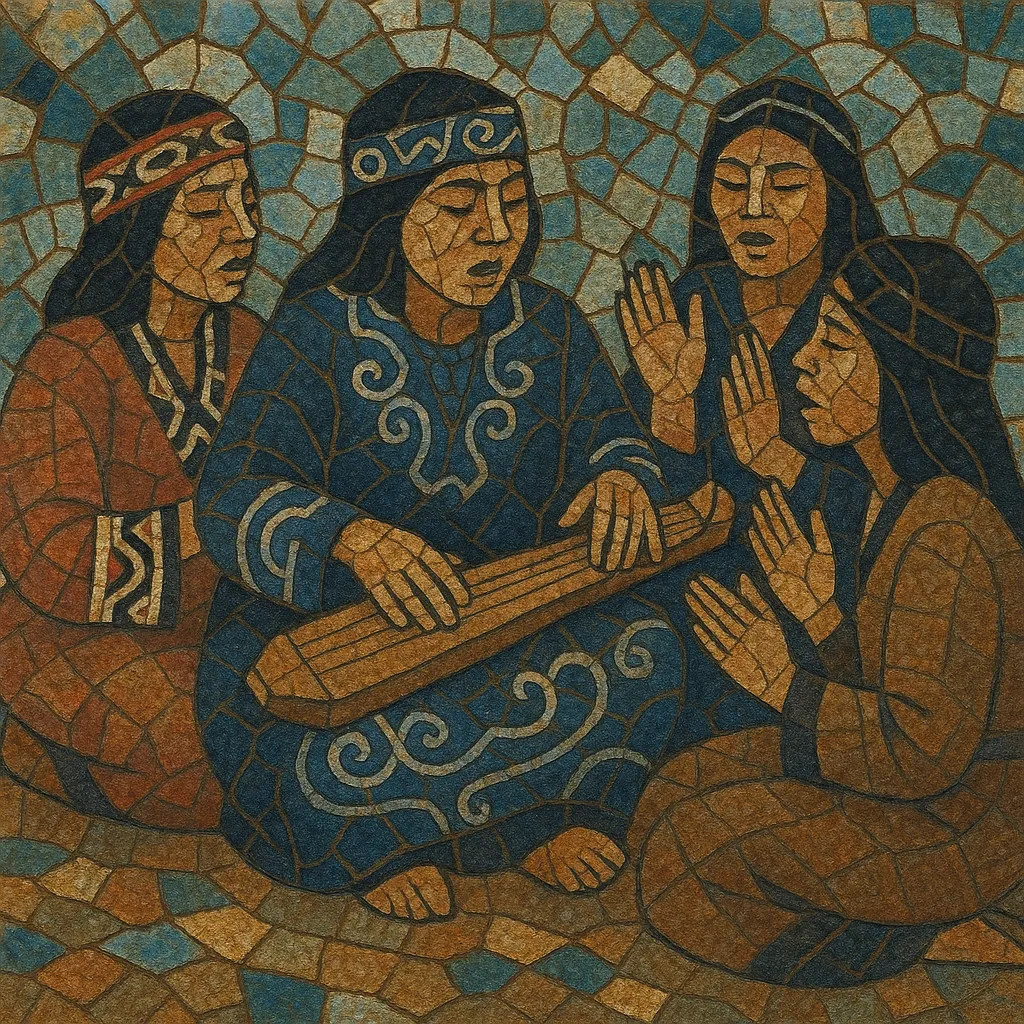Upopo is a traditional Ainu genre of short, cyclical songs, typically performed by groups (often women) seated in a circle with coordinated handclaps and call-and-response refrains. The texts frequently use vocables (non-lexical syllables) and repetitive lines that create a hypnotic, communal groove suitable for dances and everyday activities.
While many upopo are unaccompanied, they may be supported by simple percussion (handclaps, tapping trays or vessels) and, in modern contexts, Ainu instruments such as the tonkori (five‑string zither) and the mukkuri (jaw harp). Melodies are generally pentatonic and narrow in range, emphasizing rhythm and social participation over solo virtuosity.
Functionally, upopo spans work songs, play songs, and ceremonial pieces, and it often accompanies rimse (Ainu circle dances). In contemporary practice, upopo has also become a cornerstone of the Ainu cultural revival, heard on concert stages and in cross‑genre collaborations.
Upopo belongs to the Ainu people of northern Japan (especially Hokkaidō) and historically also the Kurils and Sakhalin. The form likely predates written records, serving as a multifunctional song practice for work, play, and ritual, typically tied to circle dances (rimse) and communal gatherings. Songs are concise, cyclical, and socially oriented rather than performer‑centered, relying on vocables, call‑and‑response, and coordinated clapping.
As Japanese state expansion intensified in the 19th century, outside observers and ethnographers began documenting Ainu culture. Early audio documentation of Ainu song (including upopo) was made in the early 1900s on wax cylinders, providing crucial evidence of performance style and repertoire. These records show the prevalence of short refrains, steady pulse, and collective participation.
State assimilation policies from the late 19th century through much of the 20th century marginalized Ainu language and arts. Upopo practice continued within households and communities but declined in public life, with some repertoires and local variants falling dormant.
From the late 20th century onward, cultural activism, community ensembles, and artists helped revitalize upopo. Ainu cultural organizations, museums, and festivals foregrounded traditional song and dance, and field recordings and reissues reached international audiences. In the 1990s–2000s, artists and ensembles brought upopo to broader stages and experimented with accompaniment (tonkori, mukkuri) and cross‑genre settings, further cementing its role as a living emblem of Ainu identity.
Upopo is now performed both in community contexts and on concert stages, taught in workshops, and featured in collaborations that connect Ainu heritage to world and contemporary folk scenes. While its core traits—cyclical refrains, group performance, percussive clapping—remain, modern arrangements may introduce additional instruments while preserving the genre’s participatory essence.


